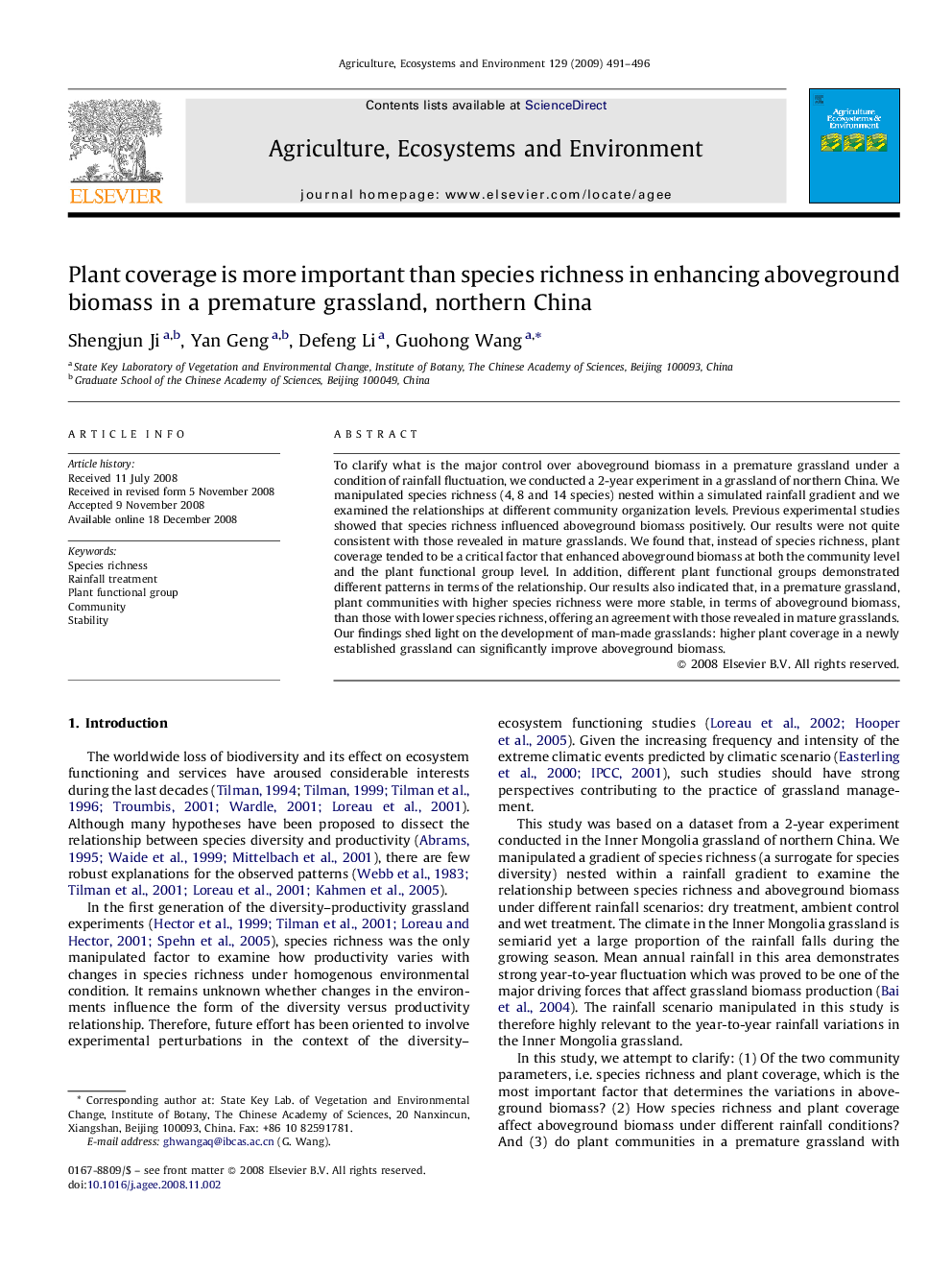| Article ID | Journal | Published Year | Pages | File Type |
|---|---|---|---|---|
| 2415480 | Agriculture, Ecosystems & Environment | 2009 | 6 Pages |
To clarify what is the major control over aboveground biomass in a premature grassland under a condition of rainfall fluctuation, we conducted a 2-year experiment in a grassland of northern China. We manipulated species richness (4, 8 and 14 species) nested within a simulated rainfall gradient and we examined the relationships at different community organization levels. Previous experimental studies showed that species richness influenced aboveground biomass positively. Our results were not quite consistent with those revealed in mature grasslands. We found that, instead of species richness, plant coverage tended to be a critical factor that enhanced aboveground biomass at both the community level and the plant functional group level. In addition, different plant functional groups demonstrated different patterns in terms of the relationship. Our results also indicated that, in a premature grassland, plant communities with higher species richness were more stable, in terms of aboveground biomass, than those with lower species richness, offering an agreement with those revealed in mature grasslands. Our findings shed light on the development of man-made grasslands: higher plant coverage in a newly established grassland can significantly improve aboveground biomass.
